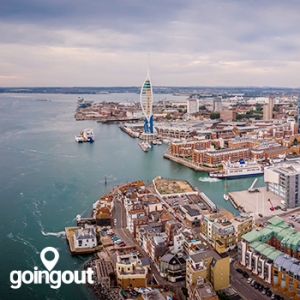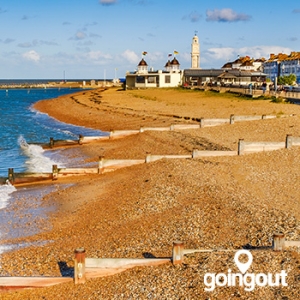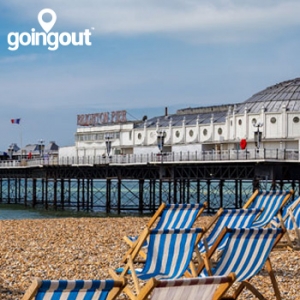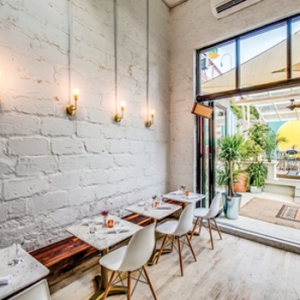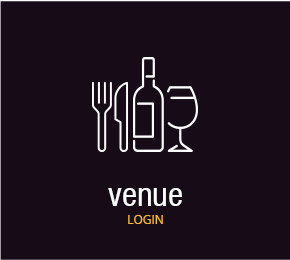Restaurant Customer Reviews - The Unfair Restaurant Rating System
Going Out is handing back control to venue owners and taking it away from unfair and biased, review based websites.
The majority of reviews left on mainstream websites are merely opinionated dribble! These websites are a breeding ground for the overly biased, unfair, frequently disingenuous and often aggressive opinions of individuals with too much time on their hands, looking to vent online with a community of equally ‘experienced counter-part critics’! Unfortunately, for venue owners and operators, these mainstream review based websites provide the platform, the allies and the audience in abundance.
We understand that reviews play an important part in consumer decision making and if processed with a ‘pinch-of-salt’ they can be helpful! However, it is rare that reviews of food and drink truly represent the product, premises, service or experience received, ranging from being disappointing, to potentially disastrous, for the pub, restaurant or venue in the public spotlight.
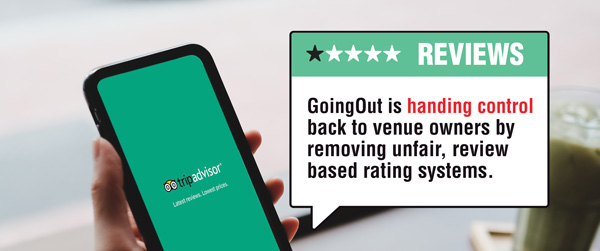
Negative reviews – an unfair rating system…
Tens of thousands of UK restaurants, pubs and hospitality venues fall foul of unbiased, opinionated, rude and damn-right insulting reviews left on major websites such as TripAdvisor. These negative reviews can be devastating for the business, often causing the venue owners a great deal of unnecessary stress and anxiety. User reviews can also go far beyond complaints about a mediocre meal, poor pint or shoddy service to much more serious claims about theft, fraud and sexual assault, the seriousness of these reviews becomes a huge and overwhelming problem for restaurant and pub owners throughout the UK.
Marketing people call a consistent one-star attack of negative reviews, on a single venue, “review bombing”. Negative review bombing is terminology that strikes fear into the heart of anybody operating a food and drink business; often these attacks go undetected by the website and unless the one-star reviews breach ‘review guidelines’ they are not easily removed! Before the TripAdvisor platform was launched back in 2000, the customer was not always king, and the customer was not always right! With the launch of several major review driven platforms it is now the case that the customer has become a formidable opponent, the customer is now empowered to make or break a venue – a daunting reality for restaurant and pub owners everywhere.
It is not uncommon for venue owners to lean on the legal sector and threaten to sue customers who post negative reviews about their venue. Unless dealing with an extreme and slanderous case this is typically a hugely expensive time-sink, with many hours of additional frustration and no satisfactory result.

"But not all reviews are bad" we hear you say.... In fact, there are millions of positively glowing reviews online!
Fake reviews – a flawed rating system….
There is a huge shadow industry of fake reviews and people paid to leave fake reviews, good or bad! Reviews can be bought, sold and traded on the internet easily, completely undermining the entire review-based system – it is a flawed popularity contest in which you can pay to win, or pay for somebody else to lose!
The review based business model relies upon having real customers, post real reviews - it’s not rocket science, but it is exceptionally difficult and costly to police. Without this layer of transparency the entire credibility of a system must be questioned. Tripadvisor has been under scrutiny many times over the years with the credibility of reviews and ratings on the system in question. One of the most damaging aspects of fake reviews is that they cast doubt over genuine reviews, the reader may be able to spot an overly zealous review or a review that is just so bad it’s hard to comprehend, but this leaves the vast majority of food and drink reviews in a questionable limbo, “do I believe the information presented or not”. This trust issue results in a flawed business rating system.
It has been proven many times that anybody can beat an online review based website rating system. If you have ever watched the Vice magazine documentary created as a hoax by the journalist Oobah Butler called ‘The Shed at Dulwich’ then you will understand that review based ranking systems are fundamentally flawed. The Shed at Dulwich became the number 1, top-rated restaurant in London on TripAdvisor simply by uploading fake reviews!
Its well worth a watch, you can find the documentary here: https://www.youtube.com/watch?v=bqPARIKHbN8
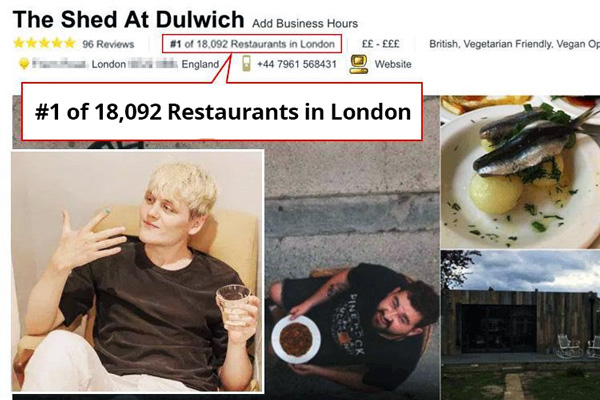
It is easy to understand just how simple it is to fabricate reviews and boost a venues’ popularity by review-bombing fake reviews. Platforms that can be manipulated and falsified to this degree are a serious concern to venue owners and are also doing the general public a disservice as they too are being deceived.
Common sense…
At Going Out we acknowledge that poor product and poor service exists and typically these factors alone will determine a venues fate! We understand that for high quality and well managed venues; you are only as good as your last service! Everybody in the trade has dealt with a difficult customer, everybody has a bad day, and everybody has the ability to improve, without the need for this to be unfairly advertised to millions of potential paying customers, through a negative review!
With over 800million reviews and opinions listed on the TripAdvisor website the problem facing landlords and restaurateurs in huge, on average their website receives 270 global contributions every minute, a frightening statistic if you happen to be on the receiving end of overly biased, unfair, disingenuous or the aggressive opinions of a disgruntled individual.
Beat the reviews…
It’s time to hand control back to venue owners! Thousands of venues are utilising www.goingout.co.uk to showcase their venue in detail and to promote their food and drink through the search engine. Restaurants, pubs clubs and venue owners are promoting their menu, facilities and benefits in real time and getting more paying customers through the door. Going Out is empowering venue owners to get more customers with NO REVIEWS!
Restaurants are only getting smaller, and that's by design
With fewer customers eating at restaurants, operators are eyeing more compact locations with dedicated areas for takeout orders.
Restaurants are shrinking. Even though more people are eating out than before, fewer are sticking around to eat their meal in store. With this shift, brands from Firehouse Subs to McDonald's and Dunkin' to Pizza Hut are rethinking design for both front- and back-of-house to better accommodate delivery and takeout — a strategy that often includes smaller formats.
When considering design, restaurants traditionally focused on minimum guest count and maximizing seats in a dining room, but these conversations are changing, Big Red Rooster Senior Vice President and Managing Director Josh Broehl told Restaurant Dive. Big Red Rooster is a JLL company that works with retailers and restaurants on experience design, brand marketing, design management and strategy consulting.
"It's now about throughput. It's now about how many customers can we serve," he said.
With multiple avenues to reach customers from delivery to mobile order pickups, there's less need for a dining room, he said. There's also financial incentive to reduce — or forgo — the physical dining space. Broehl estimates that dine-in now accounts for about 15% of a typical restaurant's sales compared to several years ago, when it was roughly 40%.
Restaurants are also analyzing customer traffic flow more closely to accommodate those that want to dash inside for pickup as well as others who want to mull over a menu and then decide onsite, Broehl said.
"We need to make sure those pathways are intuitive and easy, avoiding the bottlenecks," he said.
Restaurant design is starting to incorporate different zones where third-party deliveries can do pickups or wait for fulfillment of orders, he said.
"Delivery is a must-have these days," Pamela Flora, director of Americas retail research at Cushman & Wakefield, told Restaurant Dive. "How are [restaurants] balancing delivery prep space versus dining space? Do they have easy access for third-party pickups?"
Mobile orders fulfilled onsite are being brought toward the front for quick pickups and are separate from onsite ordering and dining, Broehl said. Shelves and lockers are increasingly popular as well, with the likes of Chipotle, Blaze Pizza and Cava adding shelves. While there were originally concerns about theft or tampering of food left on shelves, that has yet to emerge as a problem, Broehl said.
"Delivery is a must-have these days. How are [restaurants] balancing delivery prep space versus dining space? Do they have easy access for third-party pickups?" - Pamela Flora - Director of Americas retail research, Cushman & Wakefield
Needing less dine-in space is opening up options for restaurants. They don't need to spend as much on real estate costs and can instead use inline spaces within a retail block instead of a standalone location, Broehl said.
"You'll continue to see that trend where restaurants can take advantage of these more flexible spaces, which will definitely help their operating costs," he said.
While dining rooms are decreasing in size, kitchens are growing due to the addition of digital orders, he said. That often means having multiple makelines. Previously, there may have been a makeline for dine-in and drive-thru orders, but now some QSRs with drive-thrus are even adding a third makeline to accommodate mobile orders, Broehl said.
For an independent restaurant like fast casual Bamboo Asia in San Francisco, many of these design concepts, including a small footprint, were part of the plan from the beginning. The restaurant uses a commissary kitchen to prepare much of the Vietnamese, Japanese and Indian dishes that make up its menu offsite, and a sous vide to heat onsite. This allows for a smaller kitchen without heavy equipment, TRI Commercial Restaurant Specialist Erik Reese told Restaurant Dive. He has helped conceptualize restaurants, including Bamboo Asia, throughout his 20-year career in the industry.
The 1,800-square-foot restaurant only has 30 seats inside and eight outside, and most of its business is off-premise, he said. The restaurant serves about 550 customers between 11 a.m. and 2 p.m.
With less real estate needs, the restaurant was able to relocate in a prime area of downtown San Francisco, where retail rents are $450 per square feet, according to Cushman & Wakefield data.
"It really reduces our labor demands and allows us to get spaces that other companies can't take," he said.
Its location on a popular downtown intersection also serves as a marketing tool for the thousands of drivers who pass by, he said.
"The whole restaurant is an advertisement," he said.
The company is adding 12 more locations by the end of 2020 and plans to open another commissary kitchen, all of which will be built around the idea that around 25% of the business going toward delivery, he said.
A new QSR model
Major QSRs are taking cues from delivery and carryout trends as well. Fast casuals including Cava, Blaze Pizza and Chipotle are testing out drive-thrus for mobile pickup orders. Others, like Firehouse Subs, Subway, Dunkin', McDonald's and Caribou Coffee, are eyeing complete remodels and smaller store formats.
Firehouse Subs is testing a prototype that would be a dramatic design shift for the brand. It uses 25% less kitchen space and holds 28 seats compared to a traditional design of 50 seats.
The design also moves the kitchen from the front to back of the restaurant to better accommodate pickups, which have its own designated area. A stackable sandwich steamer, new to the prototype, helps reduce heating time by a minute, and CEO Don Fox told Restaurant Business the new prototype could result in one less person needed each shift.
Firehouse Subs has plenty of motivation to move toward this model. Its off-premise business now makes up more than half of its sales, according to Restaurant Business.
While McDonald's is in the midst of a major renovation across its U.S. system that will add self-order kiosks, it is also testing a McDonald's To Go format in London. Customers order using kiosks, staff is mainly back of house and there is no seating. The concept is meant to accommodate only diners on the go.
Pizza Hut is piloting cubbies for pickup orders in California and plans to expand the test into additional West Coast cities next year. These cubbies, aimed to complement its dine-in experience, are placed toward the front of the store and are meant to appeal to customers on-the-go who don't want to interact with restaurant staff. These moves seem to align with the company's recently announced strategy of closing 500 units and reopening them with its delivery and carryout-focused format that offers less dine-in seating.
Caribou Coffee is rolling out a small-format concept in Minnesota called Caribou Cabins. These 600-square-foot stores don't have any dine-in seating, but offer outdoor seating, a drive-thru and a walk-up window. The Cabin stores will offer an expanded beverage menu and a selection of breakfast sandwiches and baked goods. Caribou Coffee is looking to add more locations within the next 24 months, with five opening up in Minnesota initially. The chain will also explore additional store formats in urban and suburban areas.
There could be even more design changes ahead for the dining experience as diner demand shifts.
"Restaurants are working to bring the dining experience to customers when and where they are," Broehl said.
Instead of being tied to a set kitchen, restaurants could potentially serve up meals in a local park or food hall or other community experience, he said. Several chains like Auntie Anne's and Shake Shack have already done so by launching fleets of food trucks and opening locations at airports and travel plazas.
For consumers, it will only become easier to order out — exactly what restaurants need.
 find your venue
find your venue feature your venue
feature your venue